As a resident of the Bahamas, underwater photographer and Ikelite Ambassador Elena Kalis is particularly interested in the preservation of its natural resources. We've seen that it really can be "better in the Bahamas," and that it takes a huge joint effort to keep it that way.
The Bahamas is a coral-based archipelago in the Caribbean comprised of over 700 islands and cays. It has played a big role in popular culture as part of the Bermuda Triangle, home to celebrity private islands, and background set for the filming of Walt Disney's Pirates of the Caribbean... among many other things.

The Exuma Cays Land and Sea Park was the world's first protected area of its kind when it was created in 1958. The same legislation established the Bahamas National Trust.
The Bahamas natural habitats are known for beautiful blue waters, pink sand beaches, and... swimming pigs?! But there's also spectacular coral reef formations, abundant fish and shells, a huge variety of sharks and rays, flamingos, and loggerheads the size of a Volkswagen. The remote areas around the Exuma Cays Land and Sea Park are particularly abundant in large aquatic life and some of our favorite waters "close" to home.
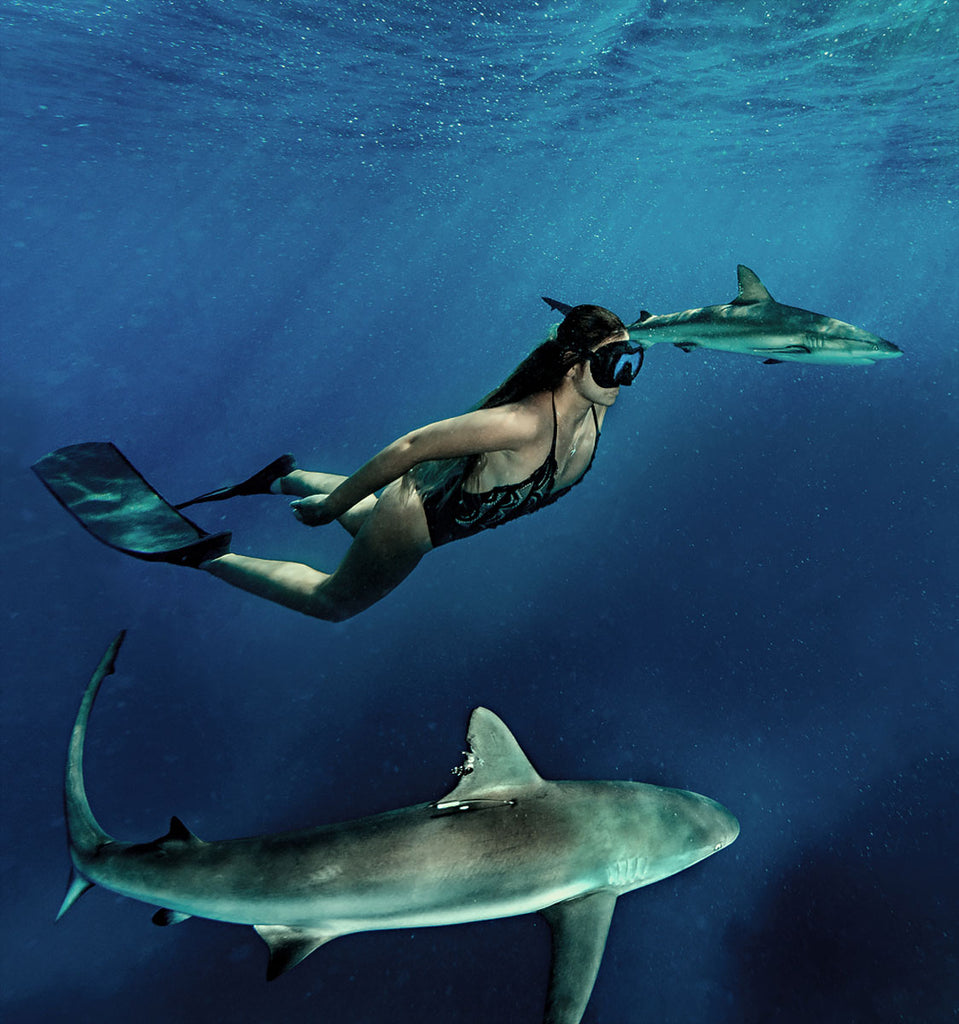
The Bahamas is home to a variety of species of sharks including reef, nurse, tiger, silky, hammerheads, and more. The sharks used to come around because they were fed, now they stay because they are protected. You can also see a number of different rays including southern stingrays and spotted eagle rays.
Danger Reef is one of the spectacular and healthy coral reef ecosystems in The Exuma Cays Land and Sea Park. Although feeding the sharks is now banned, the Danger Reef in the Exuma Cays Land & Sea Park is home to a large congregation of Caribbean Reef Sharks. In 2011 the BNT pushed for changes in the law to protect sharks so that Danger Reef is now one of a number Shark Sanctuaries in the Bahamas that makes it a unique area to experience these magnificent creatures.
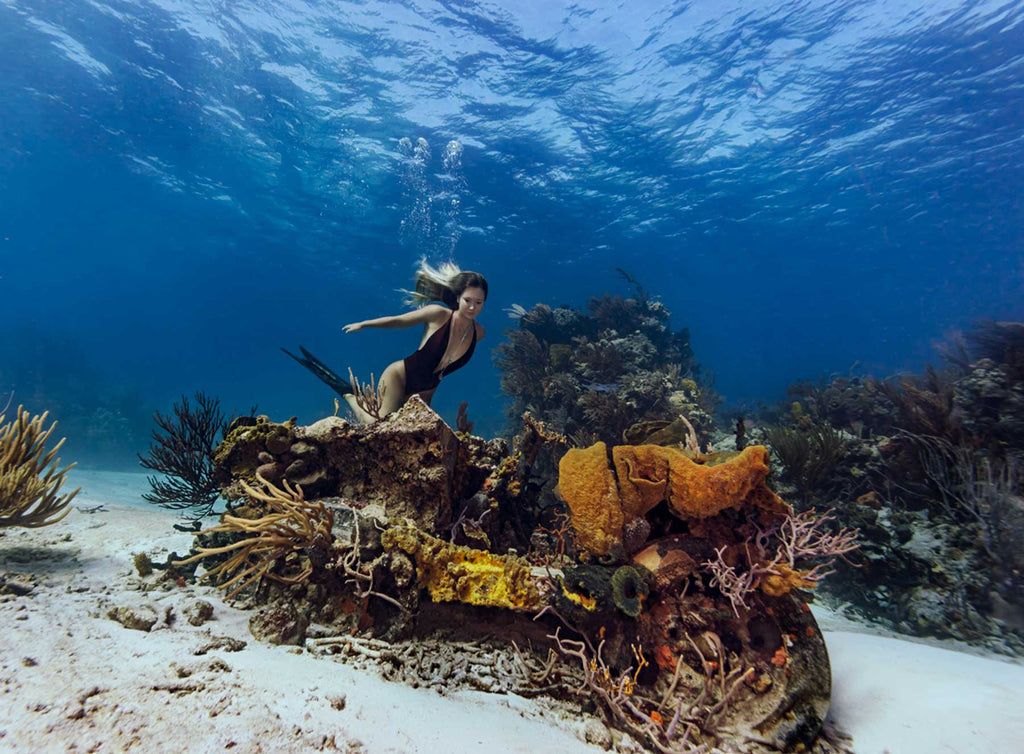
Jeep Reef, named for the coral encrusted wreck, is a rich and flourishing coral reef located in the center of the Exuma Marine Park. It is one of the healthiest reefs you will come across in part due to the strong current flowing over it. Diving is best at slack tide.
In 2018, Elena's daughter Sacha Kalis (@_bahamasgirl_) was appointed the first Ambassador of the Bahamas National Trust with a mission of bringing awareness to these unique areas that are so important to the Bahamian people, and all who treasure and wish to share this natural wealth with future generations.
It is through her photography that Elena is able to bring this cause to the attention of the rest of the world (and Sacha's 700K+ followers). Without underwater photography, most people would never see what lies just under the surface of this magical place.
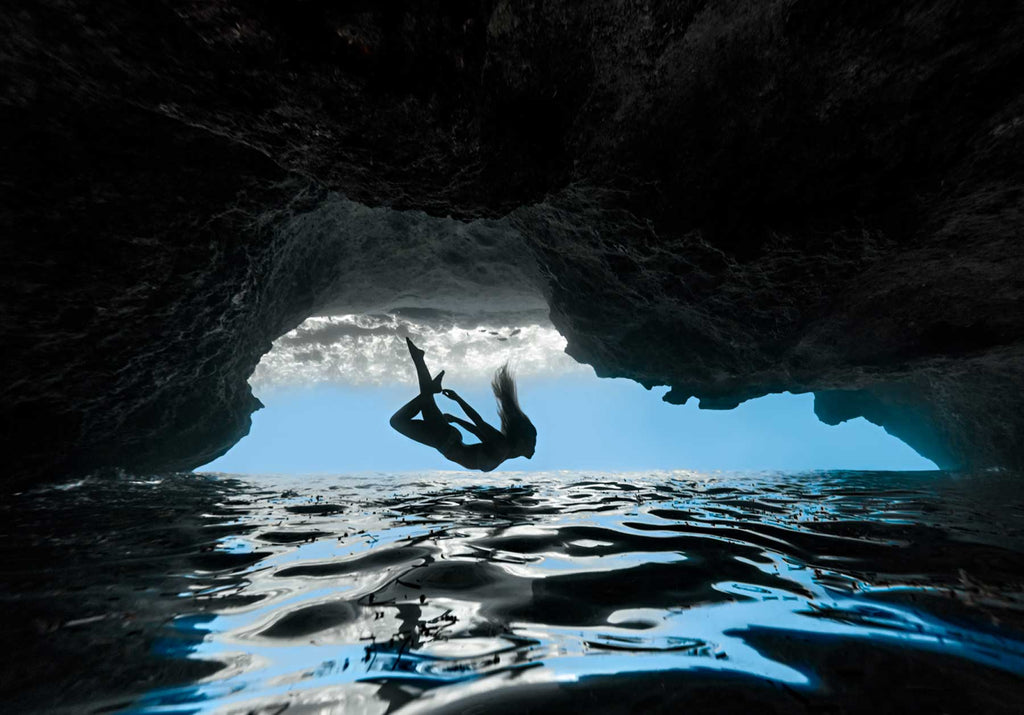
Rocky Dundas in the Exuma Land & Sea Park is a hidden treasure. Two unobtrusive entrances, only easily accessible when the tide is low, open up into mysterious high caves. The magical atmosphere inside is enhanced by the purple, pink, and green natural colors of the algae covering the walls and the stalactites and stalagmites watching over you. The caves are thousands of years old and in pristine natural condition.
The Bahamas National Trust (BNT) is a non-profit, non-governmental, membership organization founded in 1958 to protect some of the most beautiful and unique natural areas on earth. There are now over 32 legally designated National Parks spread over two million acres of ocean, tidal zones, and coastal land.
The BNT’s mission does not end with the National Parks. The livelihood of every Bahamian is, one way or the other, dependent on tourism, an industry that is built on the natural assets of the country, so the BNT has a critical role in safeguarding the country’s economic future, as well as the sustainability of its harvest from the ocean. Imagine the Bahamas without the conch, Nassau grouper, and Spiny Lobster.
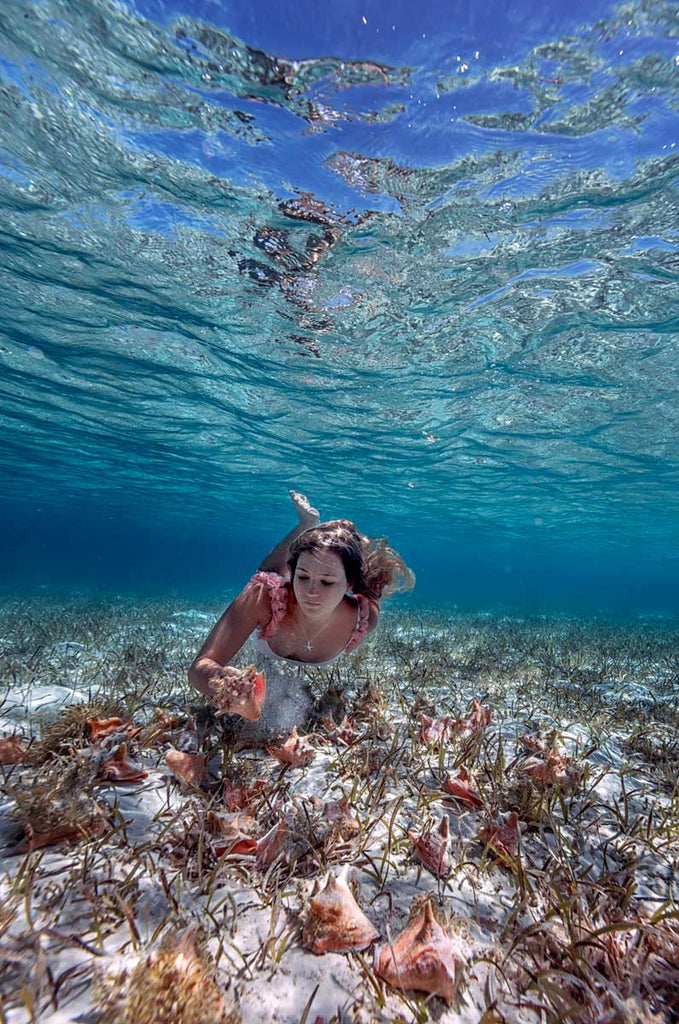
@exumacayslandandseapark is one of the most valuable marine reserves in The Caribbean , the park contains every marine habitat there is in The Bahamas, and the Seagrass Meadows are super nurseries for a number of commercially important species. Seagrass is a key element in the life of Queen Conch as they grow, feed and reproduce here. This particular area stumbled upon by @_bahamasgirl_ contained over 500 juvenile Queen Conch in a small area. Fortunately these Conch are protected within the park boundaries, and when they mature they will reproduce and populate other locations in the archipelago.
The Bahamas is still a relatively young, developing country taking on the challenge of governing an archipelago the size of Michigan, but with only the population of Cleveland, Ohio (385,000), and with 30 airports and power plants to maintain, as well as even more clinics, and schools unconnected by roads.
In short, the BNT’s budget is overwhelmed by the scale of its responsibilities. If the world-class natural treasures of the Bahamas are to be protected for future generations, a benefit not limited to the Bahamian population, it can only be done with the help of the international community.
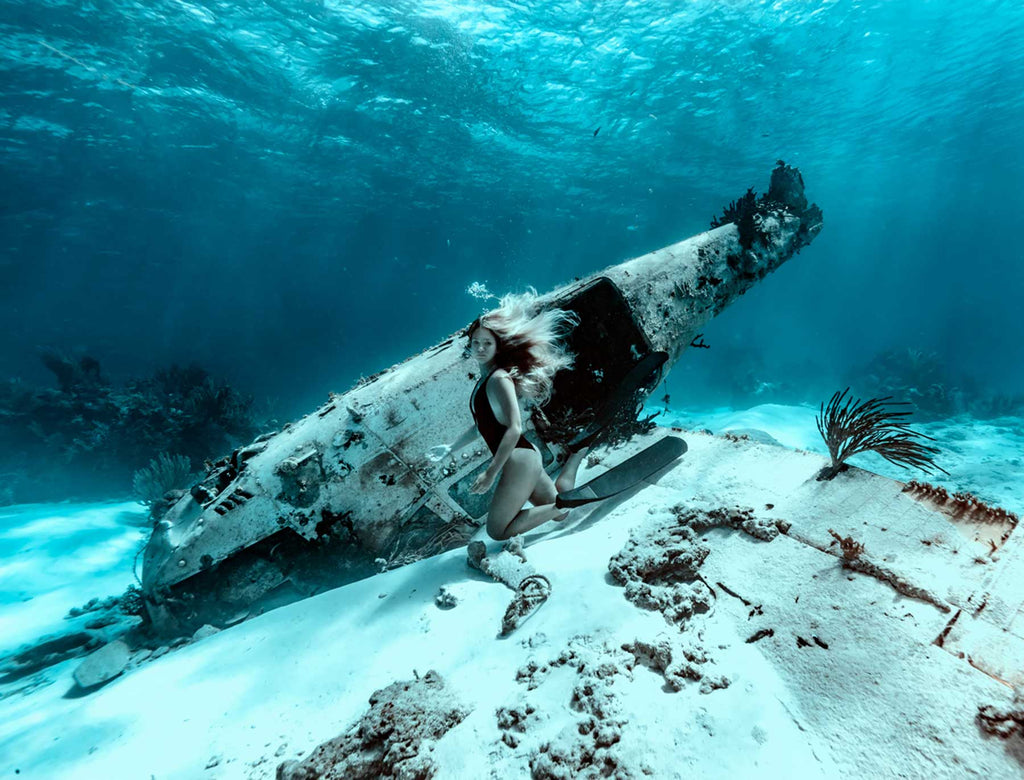
We support the passionate and dedicated people of the Bahamas National Trust. You can make a difference by becoming a member today.

The Aquarium is an aptly named snorkeling area with a variety of fish and a few turtles.
All photos Copyright © 2019 Elena Kalis
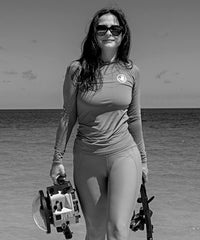 Ambassador Elena Kalis picked up a camera and housing as a way to extend her traditional art background. A resident of the Bahamas, she waded into her backyard and used her daughter as a model. This became her first major underwater project "Alice in Waterland" which went viral on the web. Since then her work has been featured on magazines and book covers, and has been exhibited worldwide. In addition to her professional work, Elena (and her daughter) have a mission to bring attention to the conservation work of the Bahamas National Trust. Read more...
Ambassador Elena Kalis picked up a camera and housing as a way to extend her traditional art background. A resident of the Bahamas, she waded into her backyard and used her daughter as a model. This became her first major underwater project "Alice in Waterland" which went viral on the web. Since then her work has been featured on magazines and book covers, and has been exhibited worldwide. In addition to her professional work, Elena (and her daughter) have a mission to bring attention to the conservation work of the Bahamas National Trust. Read more...
Additional Reading
Freediving a 60 Ton Statue in the Bahamas with Jenna Martin
Coral Reef Restoration Program in Bonaire
Cenote Commando | Fly & Dive Photography
Behind the Scenes of the Fluidity Underwater Portraiture Workshop 2019











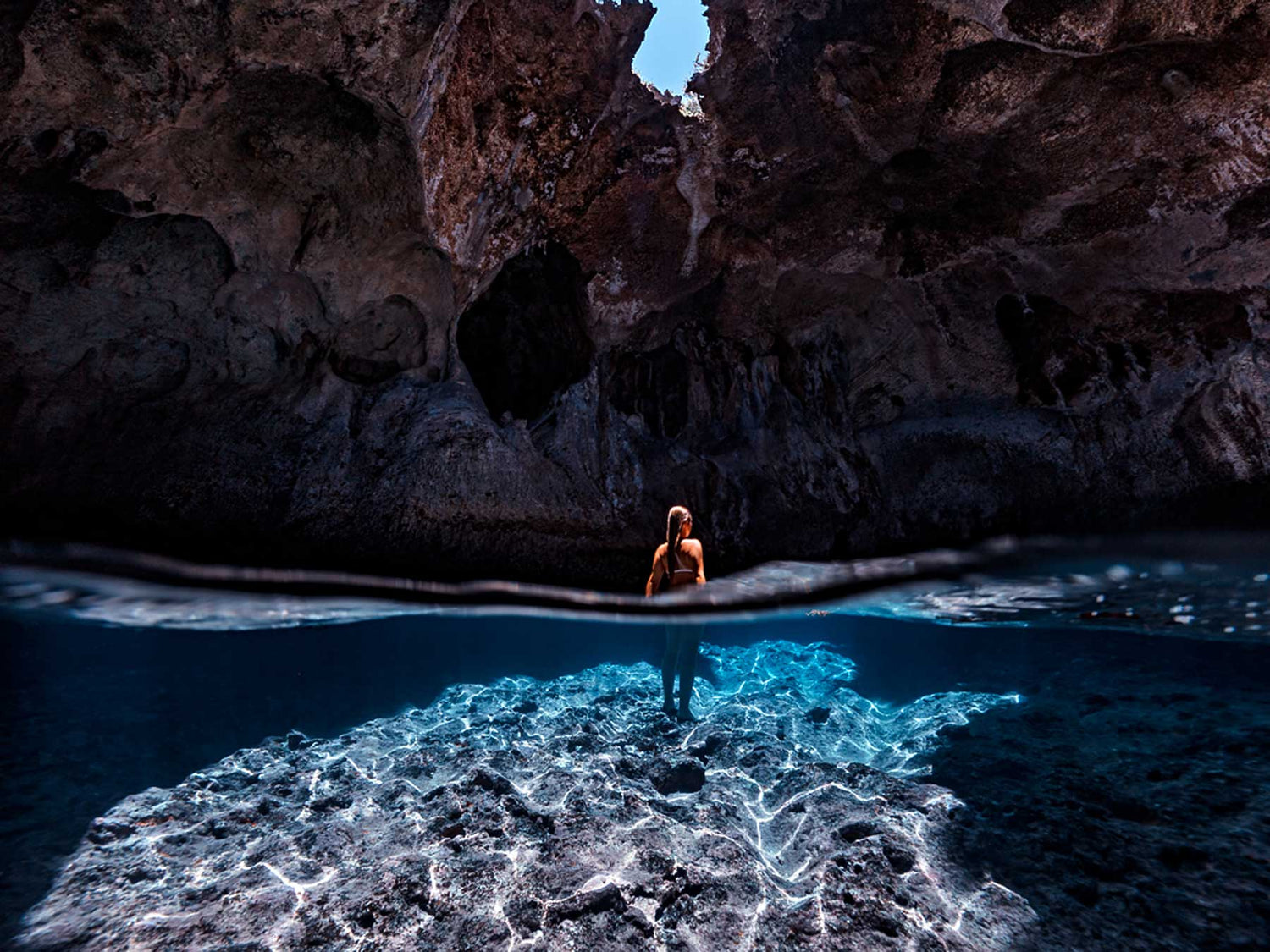
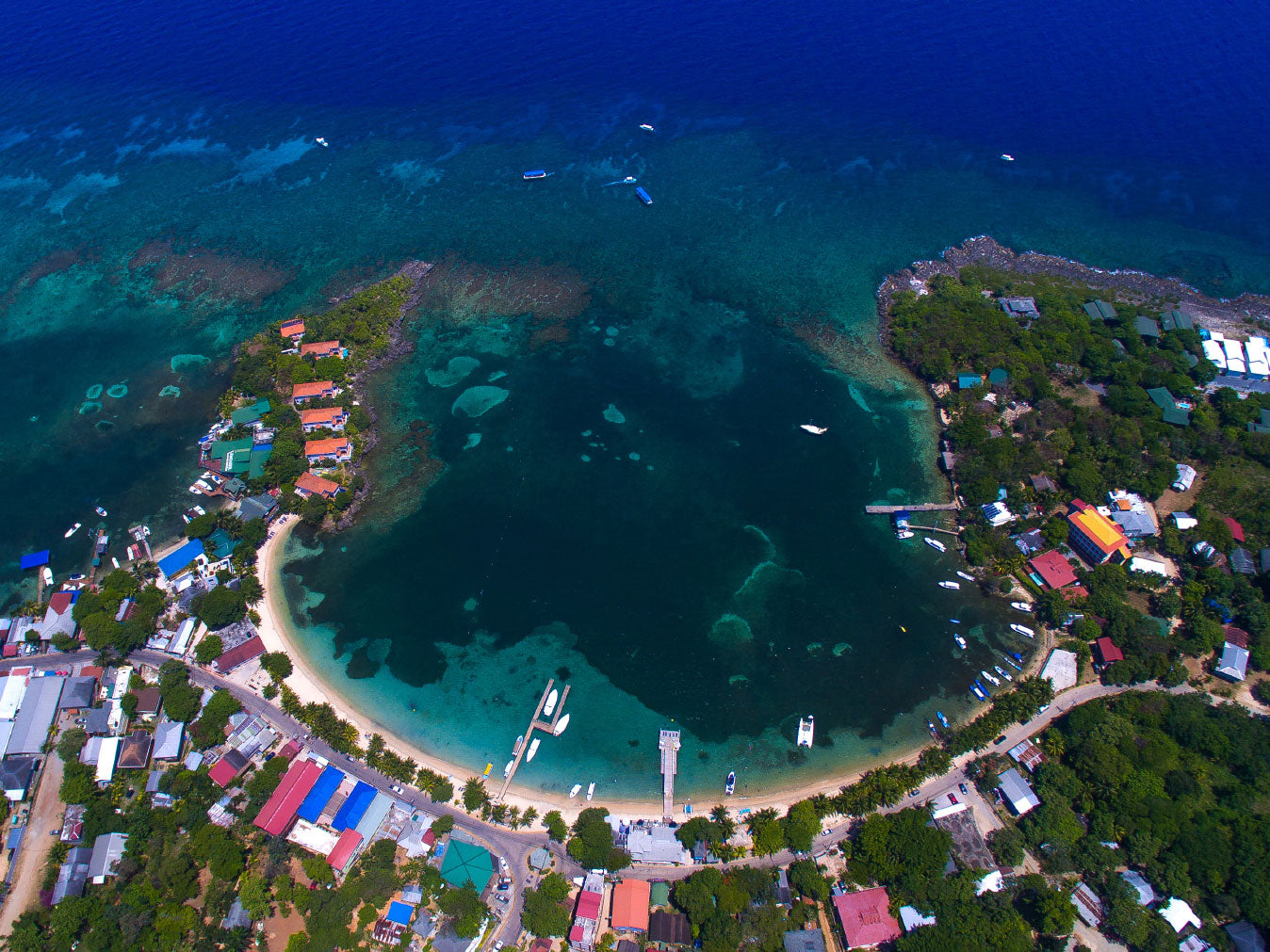
![Kingdom of Tonga Underwater with the Humpback Whales [VIDEO]](http://www.ikelite.com/cdn/shop/articles/grant-thomas-tonga-humpback-whale_dca75610-57fa-4793-9bd2-80f72f2cfe8d.jpg?v=1645886196&width=2000)